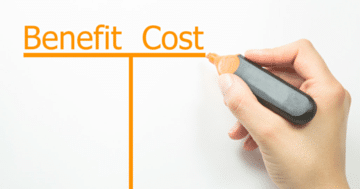 By Joe Waters, Guest Contributor, Selfish Giving
By Joe Waters, Guest Contributor, Selfish Giving
After two decades of pitching cause marketing programs, I’ve concluded that there are three types of decision-makers: The Thinker, The Feeler and The Deferrer. In this post, I focus on The Thinker. I’ll cover The Feeler and The Deferrer in future posts.
Here’s a quick summary of The Thinker. Facts and figures are her mainstay. She’s wedded to arguments and will pour over graphs and charts looking for value and return. She is rational and logical. A seasoned cause marketer could walk into a meeting and share gut-wrenching stories that would soften a bedpost but never phase The Thinker. Here’s how to pitch The Thinker on her terms and win the day.
Be Clear on the Cost-Benefit
 The Thinker focuses on benefits and costs. “If I take this route,” she thinks, “I get X, but it costs me Y.” To The Thinker, cause marketing is just another type of marketing. She will weigh the benefits of the former against all the other kinds of marketing programs from which she can choose.
The Thinker focuses on benefits and costs. “If I take this route,” she thinks, “I get X, but it costs me Y.” To The Thinker, cause marketing is just another type of marketing. She will weigh the benefits of the former against all the other kinds of marketing programs from which she can choose.
Your goal is to convince The Thinker that the benefits of cause marketing exceed its costs and outshine all other options. For example, show your prospect that while it’s expensive for a business to invest in some forms of marketing—such as advertising on television, radio or in print—cause marketing is very affordable and delivers a competitive edge that goes beyond product and price.
This Will Help: To make a strong argument for cause marketing, check out For Momentum’s recent post on how consumer trust is strongly linked to a company’s association with a good cause.
Build your case further with one of the infographics from this Pinterest board. This one from Good360 may hit the mark!
Focus on Taking One Step Forward

With any decision-maker—but especially with The Thinker—it’s important to understand how she views the world. What does she believe to be true? From there, it’s all about incremental change. Build on areas of agreement and focus on taking ONE. STEP. FORWARD.
For example, if your prospect is already raising funds for a charity and is happy with the results, you don’t need to convince her that cause marketing works. She knows that. You only have to convince her that her company should run another fundraiser with a different charity. Boost your argument with examples of businesses that successfully work with multiple charities.
This Will Help: Mollye Rhea, For Momentum’s prez, is an expert at pitching cause marketing partnerships. Megan Strand and I have interviewed her several times on CauseTalk Radio. She’s always great! In this episode, Mollye discussed the steps you have to take to close a new corporate partnership. It’s been one of our most popular episodes!
Use Incentives
An incremental thinker focused on the cost-benefit of cause marketing will respond to incentives. As an example, a restaurant chain owner recently told me about an opportunity he had to move into a new market. Another restaurant chain had gone out of business, and the now-vacant locations were a close match. The seller sweetened the deal by including some expensive ovens that he could have sold separately. The deal went through. Incentives work, especially for The Thinker!
This Will Help: Below are a few incentives that work in cause marketing.
 Give it all away. For example, if you are pitching a chain of coffee shops that would be a good prospect for donation boxes, offer to pay for the canisters for their stores in exchange for a three-year commitment.
Give it all away. For example, if you are pitching a chain of coffee shops that would be a good prospect for donation boxes, offer to pay for the canisters for their stores in exchange for a three-year commitment.
Include a cross-partnership opportunity. That same coffee shop chain may benefit from working with a sandwich shop across town. Sales of a coupon book at both businesses would support your cause and may lead to new customers for your partners.
Sweeten the pot. If your organization runs special events, offer your prospect a sponsorship credit if they host a successful fundraiser. For example, if a business meets a $25,000 goal, they get a foursome and a hole sponsorship at your next golf tournament.
Remember, The Thinker can also be feelers and deferrers, but their rational behavior dominates. The Thinker isn’t always about the dollars, but everything definitely has to make sense.

[…] This got me thinking about the art of persuasion—not a huge leap for me as I studied rhetorical criticism in graduate school. And it led me to another book, Words Like Loaded Pistols: Rhetoric From Aristotle to Obama. From this book I decided to write a series of posts on the three types of decision-makers and the persuasive appeals that move them. Hence, my June post: “How to Pitch a Cause Marketing Program to ‘The Thinker’.” […]